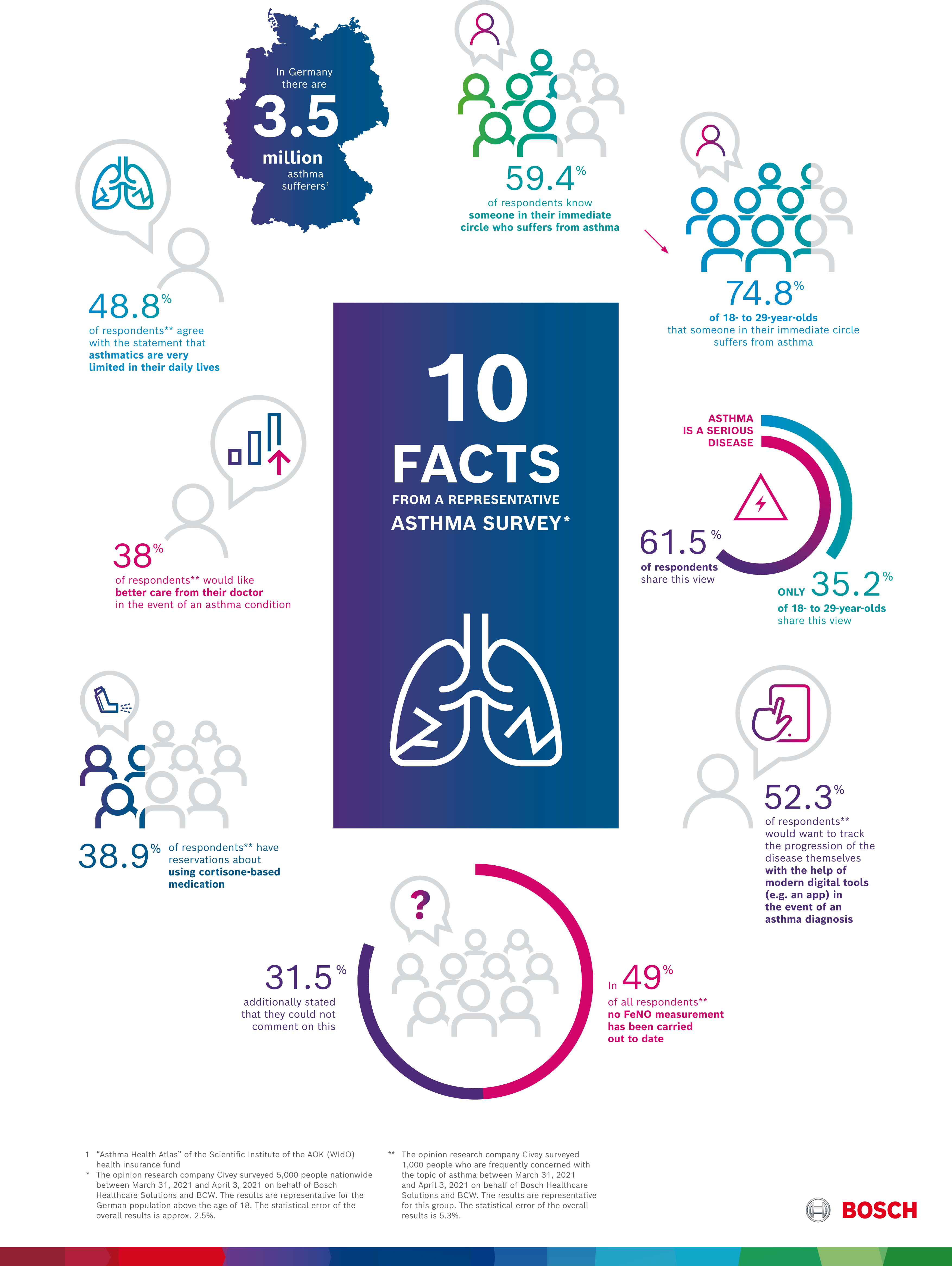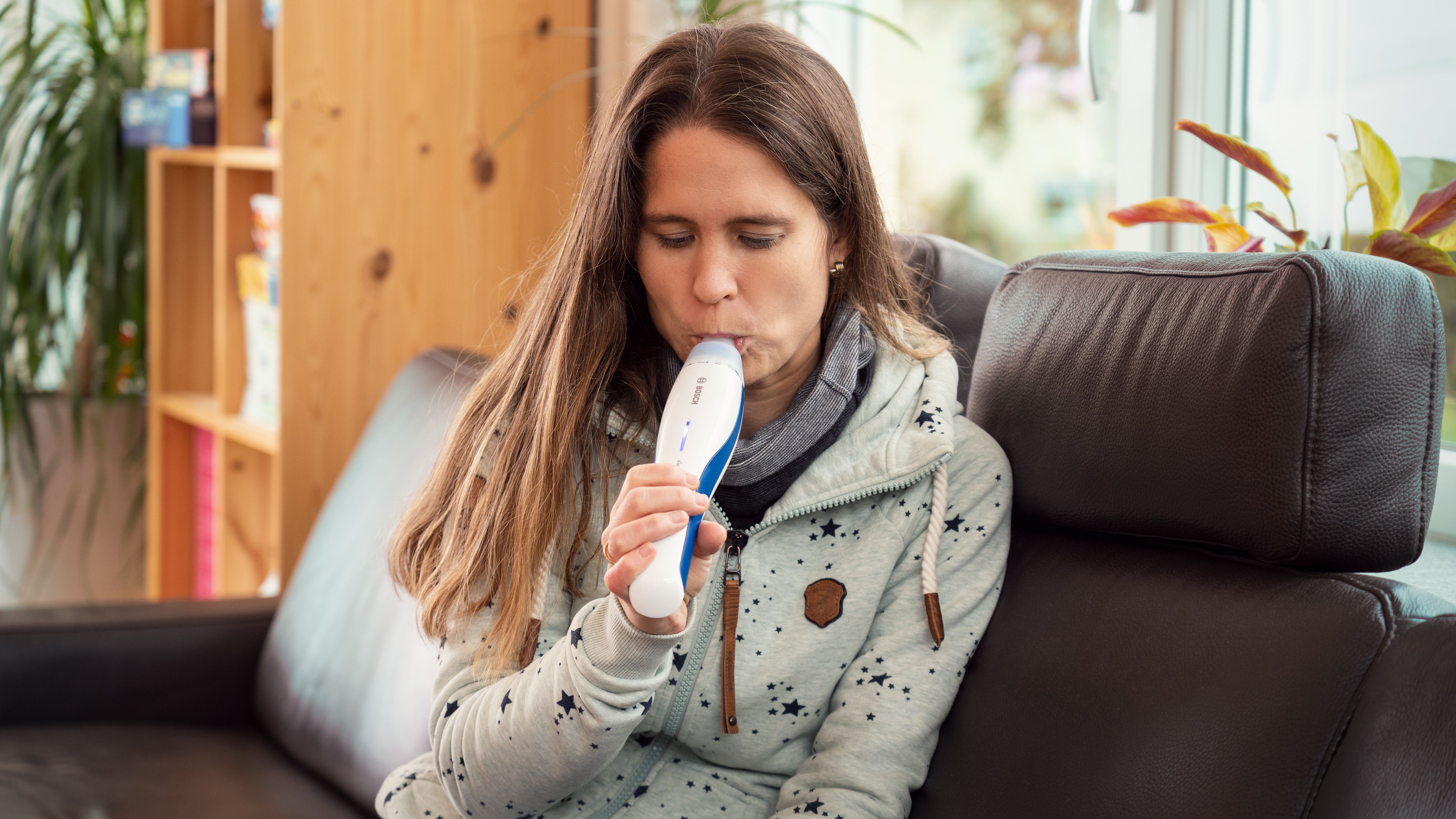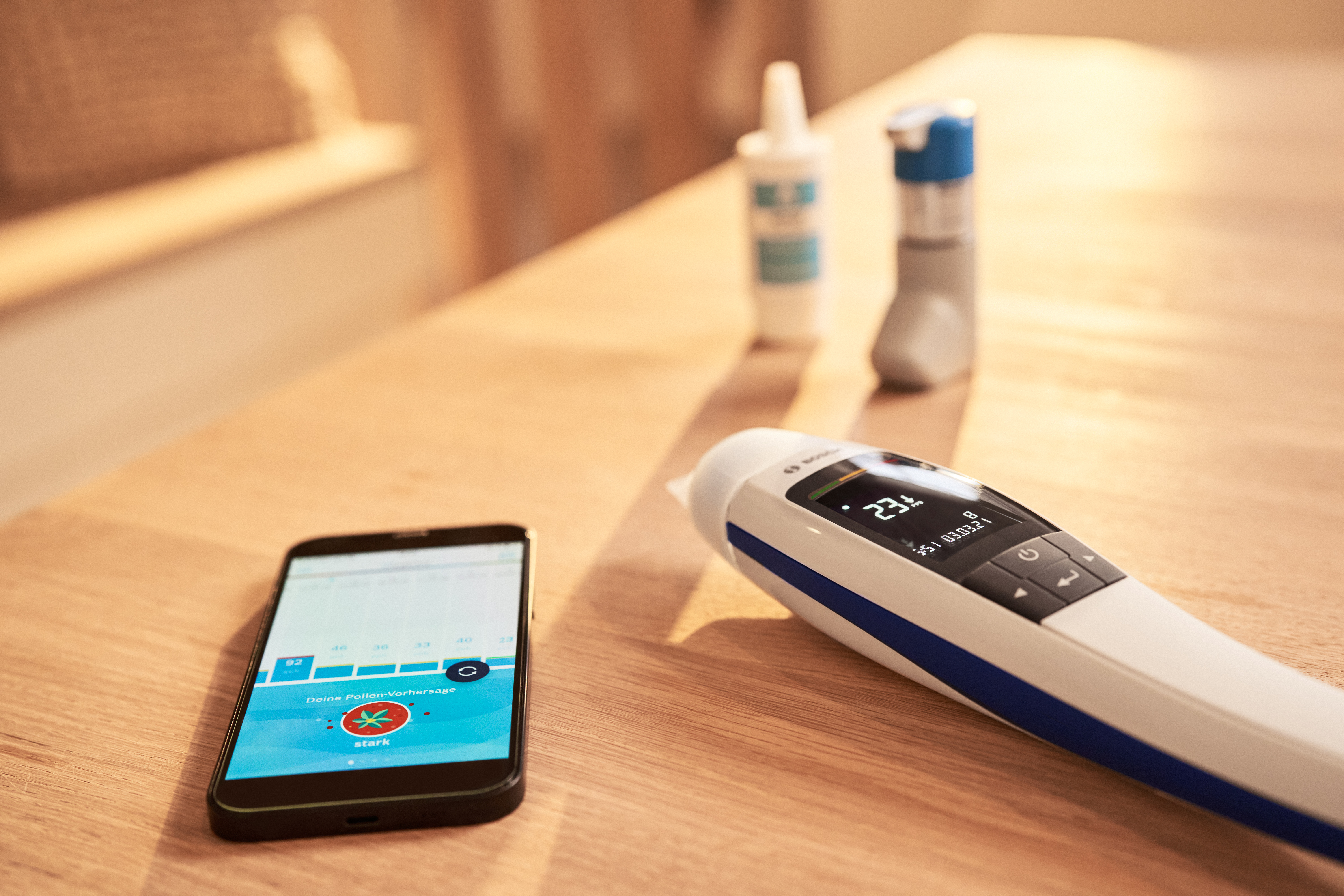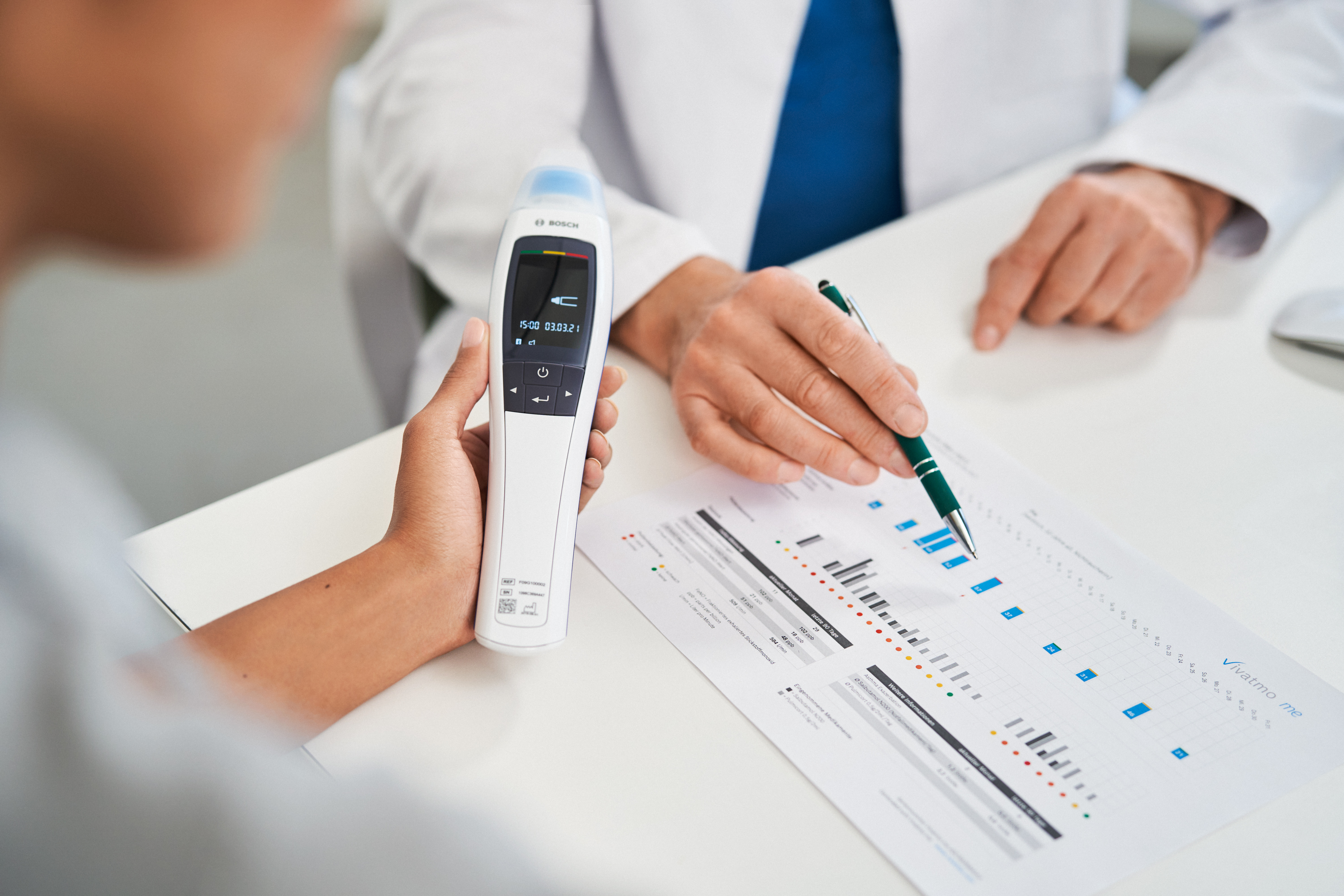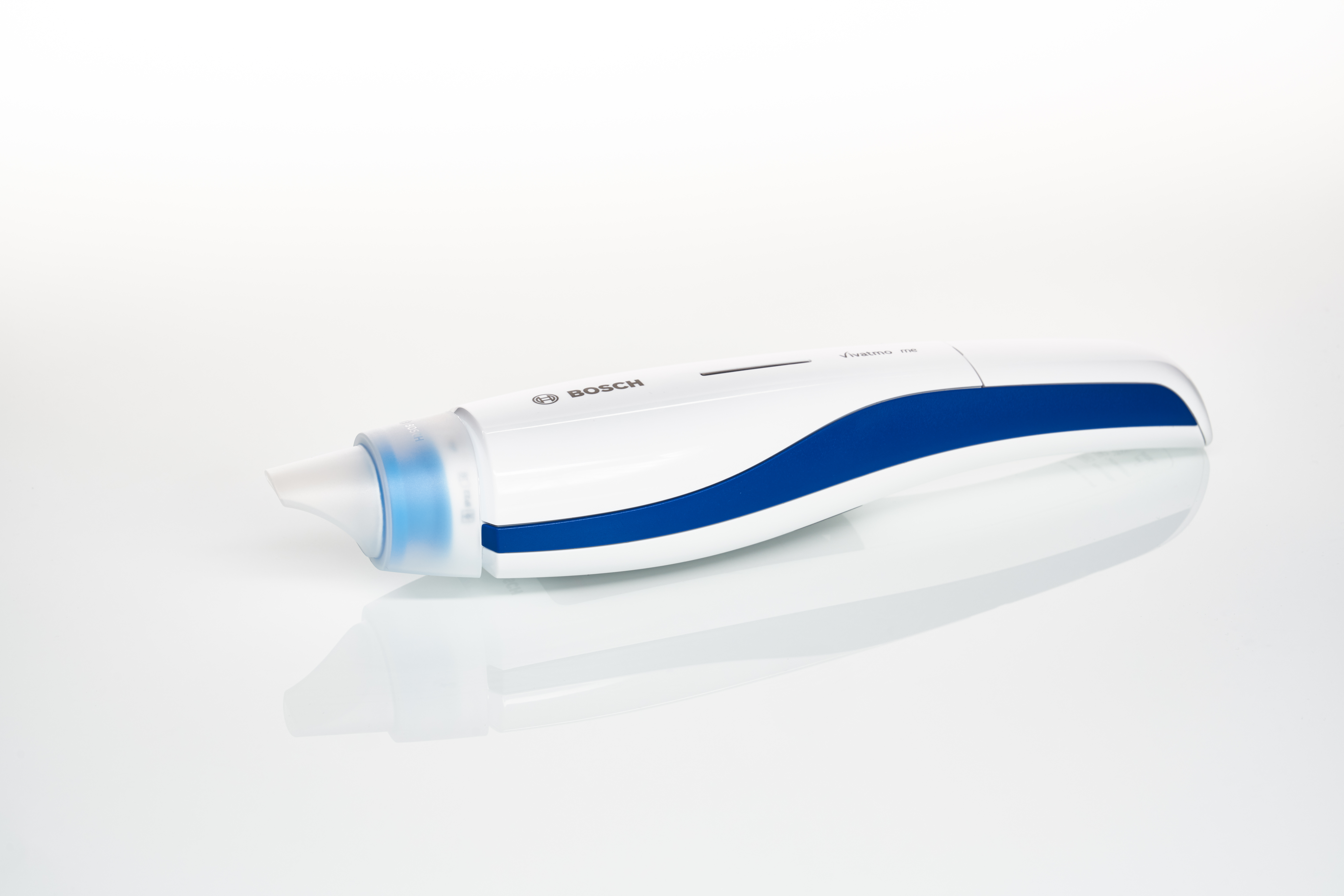2. Asthmatics would welcome digital solutions for self-testing
More and more patients are demanding that digital solutions be used in medical treatment. The opinion research company Civey recently carried out a representative online survey of 1,000 respondents for Bosch Healthcare Solutions. More than half the respondents (52 percent) said that, in the case of asthma, they would welcome modern digital aids such as apps to help them keep track of the course of their condition. At 62 percent, the willingness to self-monitor is particularly high among 40- to 49-year-olds. On average, the desire for more medical test devices for the home is also higher in this demographic.
3. FeNO or NO tests as a new monitoring method
What are known as FeNO or NO tests are a new method for monitoring the treatment of asthma. They allow patients to test the level of an inflammation marker in their lungs. The inflammation associated with asthma causes the production of nitric oxide (NO) in the mucus membranes of the respiratory tract. The amount of this gas can be measured as fractional exhaled nitric oxide (FeNO). The higher the NO level, the more severe the inflammation. In healthy adults, the FeNO level is generally less than 25 ppb (parts per billion). FeNO levels of more than 50 ppb are a symptom of an acute allergic airway inflammation: “We have been measuring FeNO levels in daily practice since the first measurement devices came onto the market. Our experience with allergic asthma patients has been very positive. In this context, self-testing improves compliance, and helps patients and physicians to understand each other better,” says the lung specialist Dr. Michael Barczok, who also co-founded the lung center in Ulm, Germany. Bosch Healthcare Solutions’ measuring device Vivatmo me allows asthmatics to measure their NO levels at any time and in any place. It is the world's first FeNO meter for home use.
4. FeNO and NO tests still relatively unknown in asthma treatment
For patients, NO tests are both stress-free and simple to perform. Although they are available to patients in Germany, they are not covered by statutory health insurance programs. The latest German national treatment guidelines also list the determination of fractional exhaled nitric oxide as part of the initial diagnostic procedure for asthma, and recommend repeated testing.
Nonetheless, many patients have never heard of this method for monitoring asthma. To their knowledge, only 20 percent of those who keep themselves regularly informed about asthma have had a FeNO test, the Bosch survey found. Half (49 percent) of the respondents have never been given a FeNO or NO test by their doctor. And when asked about this test, a further 31 percent gave no reply or had never heard of it.
5. Closely meshed treatment can positively influence course of disease
The Bosch survey suggests that half the respondents are satisfied with their medical care and value personal contact with their physician. Vivatmo me helps patient-physician communication by digitally managing test results in an asthma diary app and sharing them with the physician as required. The app has already won an award, the PneumoDigital quality seal, for its user-friendliness. “By using Vivatmo me to monitor their results themselves, asthmatics can regain control over their condition and get a better idea of what their ‘invisible enemy’ – airway inflammation – is up to. For many asthma sufferers, this is a crucial step toward dealing better with their disease and getting a grip on it,” says Dr. Michael Barczok, when asked about his experience with Vivatmo me and its digital treatment approach.
Close monitoring of inflammation levels via FeNO measurement has a positive impact on potential asthma in pregnant women's children as well. According to an Australian study, a medical diagnosis of asthma in these children was reduced by almost 50 percent by preschool age.
6. Nearly 40 percent of respondents have reservations about corticosteroids
The German national guidelines for asthma treatment set out a phased plan for the treatment of adult asthma. The use of inhaled corticosteroids (ICS) is common to each phase. Nearly 40 percent of those polled on behalf of Bosch expressed their reservations about the use of corticosteroids in asthma treatment. These reservations become stronger with increasing age. Vivatmo me gives patients a clear idea of the course of their illness. Deterioration can be detected early on and treated in time with their physician. “The fight against asthma will not be won with beta agonists and corticosteroids. I believe it makes more sense to intervene earlier and, through continuous treatment in close consultation with the patient, to prevent acute symptoms from appearing in the first place,” says Barczok, summing up the benefits of close monitoring.
7. Vivatmo me available in Germany and Austria
Vivatmo me has been available in Germany and Austria since March 2020. In a next step, it is planned to obtain approval in other markets, such as the United States. The development of the Vivatmo system was able to draw on the Bosch Group’s experience and core competencies in sensor and microsystems technology, miniaturization, algorithm development, smart connectivity, and the manufacture of highly precise, complex products that meet the company’s exacting quality standards.




